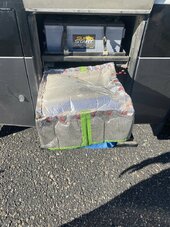brad2388
New Member
Im currently looking into replace our lead acids with a built pack with eve 280 ah cells. My converter is not lithium rated but its a WFCO WF-9865. They also make that converter in a AD version that is lithium. Im planning on changing this inverter to a lithium version either the WFCO or the Progressive Dynamic. But my question is heating pads. We have low temps below 32 degrees but we are only using this pack for moving between campgrounds and will mostly be stored. Will the cells stay warm enough when moving to another campground to be able to be charged back up when we get there? I have a 1500 watt inverter built into the camper that runs the refrig. Also the truck has a charge line from the engine but im sure its not enough to "charge" as long as the refrig is running.
Also what is the best voltage to store this pack at? Since most of the time we will have shore power.
Thanks
Also what is the best voltage to store this pack at? Since most of the time we will have shore power.
Thanks



